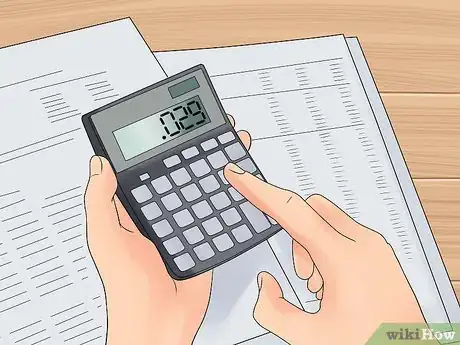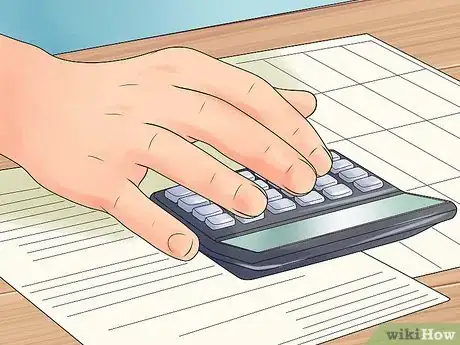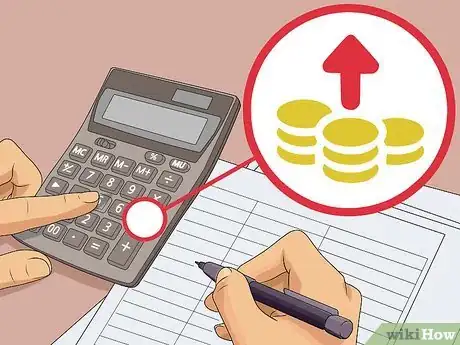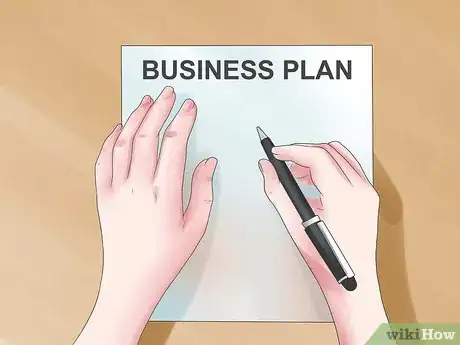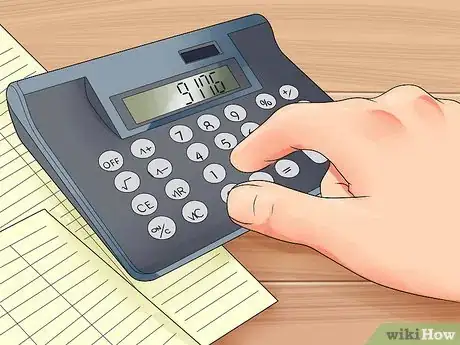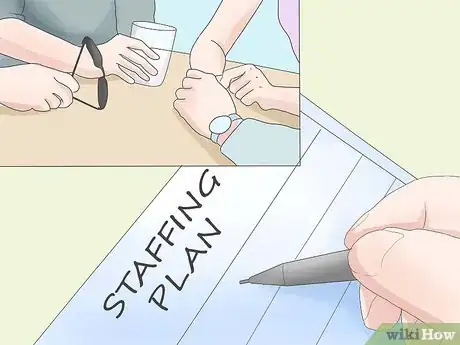This article was co-authored by Michelle Arbeau. Michelle Arbeau is a Numerologist & Life Strategist, and the CEO of Authentic You Media and Eleven Eleven Productions. She’s based in West Hollywood, California. With over 20 years of experience, she specializes in numerology, mediumship, and business advice. In 2015, Best Businesses named her the Best of West Hollywood Celebrity Numerologist, and she’s been hailed as the #1 Numerologist in the World and the #1 Celebrity Numerologist.
There are 11 references cited in this article, which can be found at the bottom of the page.
wikiHow marks an article as reader-approved once it receives enough positive feedback. In this case, 81% of readers who voted found the article helpful, earning it our reader-approved status.
This article has been viewed 231,798 times.
Opening a shop is a challenging task that requires time, money, and dedication. If running your own business is your dream, though, the effort will be well worth it!
Steps
Deciding on the Basics
-
1Decide what kind of shop you want to open. What are you going to sell? You could sell clothing, home and office supplies, baked goods, coffee, handmade products, etc.
- What do you know a lot about? For example, if you are a talented baker and enjoy putting together new and interesting recipes, a bakery is a good choice. Focus on your talents and interests.
-
2Find out what is in demand in your city. If you don’t already have aspirations about what kind of shop you want to own, you can take a more practical approach to figuring out what your city or town is missing.
- Walk or drive around your city. Bring a pen and paper with you to write down the businesses you see. Make a tally mark next to each business as you come across more than one. For example, if you see 5 bakeries, you should have the word “bakery” written with 4 tally marks next to it. Although not the most scientific, it can give you a good idea of what kind of shops are in each area.
- Visit your local chamber of commerce. Typically, chambers of commerce offer a wealth of information about what businesses are already existent, and lots of additional information for small business owners. They may be able to advise you on potentially good business ventures.
- Governmental agencies typically offer plenty of information about economic indicators, income and earnings in different parts of the country, as well as statistics about employment.[1] This information can also point you in the direction of good business ideas.
- Visit trade shows and read business magazines. These provide yet another source of information about business trends in the country and maybe even specifically in your city, depending on where you live. They may also inspire ideas you hadn’t previously considered.[2]
- Search online. You can search for things such as small businesses, the neighborhood you're interested in and the name of your city to find other databases and potentially even academic information about business trends in your local area.[3]
Advertisement -
3Make your product unique. Once you have decided on what you want to sell in your shop, take the extra step to put a twist on convention. [4]
Calculating the Cost of your Product
-
1Calculate your costs. Will, what you want to sell be profitable? Take the time to compare the costs of creating your selling product with what you can sell it for. If your product costs a lot to produce, and the going rates for the product are low, then it will be more difficult to make a profit.
- As a startup company, calculating your margin is a bit tricky. However, you can get a good idea of what your costs should look like by comparing the margins of the industry averages and competitor companies. For example, you can find out how much your competitor sells their product for, and compare it with your calculations of how much the product costs to create.
-
2Determine your annual overhead costs. This includes costs such as shop rent, phone bills, marketing costs, etc. 'Let’s pretend your annual overhead costs are $15,000/year.
-
3Calculate the number of hours you spend creating the product each year. Let’s say you work 40 hours/week, 50 weeks/year, and that you spend half of your work week (i.e. 50%) creating your product. In this case, let’s pretend you bake cakes. Using the equation: number of weeks worked x hours per week X the percentage of time you spend creating the product will tell you how many hours you spend creating the product each year. For this example, that means 50 x 40 x 50% = 1,000 hours spent creating the product.
-
4Take your annual overhead expenses and divide that number by the number of hours spent creating the product each year. For example, $15,000/1,000 hours = $15.00/hour. This is your hourly overhead cost.[5]
-
5Decide how much money you would like to make in a year. Be reasonable about this number! This means the money you use for personal living expenses. Let’s say you hope to make $20,000 in your first year. To find out your hourly wage, divide your desired salary ($20,000) by the number of hours you spend creating the product (i.e. 1,000 hours/year). $20,000/1,000 = $20.00/hour.
-
6Determine how long it takes you to create one product from start to finish. Let’s say that to make one cake from start to finished product, you need 1.5 hours. You will likely have to bake a few cakes and use a timer to figure this part out. You will take your hourly wage and multiply it by the amount of time it takes you to create one unit. In this example, that means $20.00 x 1.5 hours = $30.00.
-
7Calculate your material costs. For this example, this means how much all the ingredients for one cake cost. If you buy one dozen eggs for $5.00 to make your cake, but only use 2 eggs, then your egg cost/cake equals .84 cents ($5/12 eggs = .42 cents/egg multiplied by 2 eggs = .84 cents). Do this for each ingredient you use. Let’s say you find out that all the ingredients for one cake will cost $4.00.
-
8Decide on a contingency percentage. In your cake making business, you will likely end up with a percentage of the product you can’t sell. Maybe a few cakes are burned, or fall on the floor, or aren’t sold in time. Keep this percentage low. For this example, let’s say your contingency is 10%.
-
9Accurately calculate your final product cost using the numbers from the previous steps. Here is the equation: The final number from step 6. ($30.00) + the material costs in step 7 ($4.00) x contingency percentage in step 8 (110%) = $37.40/cake.[6]
- In order to calculate the final number correctly, you have to add a 1 in front of the percentage because when you multiply a percentage, you place a decimal in front of the number (so 10% becomes .10), and when you multiply a decimal number by a whole number you get a smaller number. For the case of calculating product price, you have to add a 1 to make the number bigger, so 10% becomes 110%, which for multiplication purpose becomes 1.10.
Preparing to Open Your Shop
-
1Research the competition in your area. If you're up against a giant store with bargain basement prices, you're not going to make a profit.Unfortunately for small business owners, these giant stores operate in most cities. However, if you strive to make your store a special experience, you will attract customers.
- The Small Business Association of America offers a free tool that allows you to map out all of the businesses in your city that offers similar services.
- Identify the top competitors by searching the web. For example, if you want to open a beauty salon, search “beauty salons” + the name of your city. Read reviews about each one. Look specifically for what reviewers like and dislike about different salons. Not only will this help you identify competitors, but it will also give you ideas about how to improve your own business.
- You can also find out about the competition by visiting the stores. Check their prices and chat with their employees. Look at how their store is arranged. You should be looking for some way that you can do better than them. For example, offering an extra service for free or for a minimal charge.
- Remember that even after your shop is well-established, you should keep up with what the competition is up to! This way you can do your best to keep ahead.
-
2Construct a sound business plan. A business plan is typically a projection of how your business will generate revenue over the next three to five years.[7] It should include information about what your business will sell, a description of your company, an analysis of the market for your business, and plans for how you will market your request.[8]
- If you plan to apply for financial support (e.g. a small business loan, or government funding) make sure you include a section that outlines how much money you need over the coming five years, how the funds will be utilized, as well as any plans you may be planning to implement in the future (e.g. if you plan to sell the company after it becomes profitable).[9]
- It is a good idea to have an accountant evaluate your business plan. He/she might come up with additional costs to consider, start-up tax breaks, or add additional insights about your income projections.
-
3Find investors to put up the capital for your shop. When opening up a shop you are unlikely to make a profit in the beginning considering all of the initial money that must be invested and repaid. This means that you’ll need funds upfront to cover the start-up costs of your business.
- Information about how much money you need and how the money will be used should be present in your business plan. How you find investors depends on your specific situation. For example, maybe you have friends or family members who want to help you get on your feet, or maybe you want to apply for a small business loan.
- Ask about government grants and loans at your local chamber of commerce.
- Regardless of what type of investor you find, they will probably want to make sure you have a strong plan for getting your business off the ground.
-
4Find out about what is necessary to become a business owner. Different kinds of businesses require different permits and follow different tax laws. Before opening your business you will need to find out what is required to legally operate in your city. The best way to find out this information is to visit your local chamber of commerce. There, they can advise you on what is important to take care of.
- You can also search online for state and county government websites.
-
5Find suppliers. You will have to figure out where you will get the product you want to sell or the components of the final product to sell. However, there is no good way to do this.
- You can ask around at shops who sell similar products to see if they will help, especially if it is a store that is unlikely to be a big competitor because they focus on a different market.
- Search the internet. For example, search for “wholesalers and suppliers” + your industry + your city". If you have specific requirements you can also include that in your search terms. For example, if you want to offer organic products, include “organic” in your search terms.
- Look in trade journals. Find the most popular trade journals for your industry, and buy a recent issue of the journal. Not only will you find lots of interesting information about your business, but there are likely to be lots of advertisements for suppliers too.
Choosing a Location
-
1Scrutinize your city. You will need to think about the best place to sell your shop based on what you want to sell. Putting your shop in a bad location almost guarantees that your shop will fail.[10]
- Think about what areas are trendy for shopping. These areas may have more expensive rent, but may have the exposure necessary for success.
- On the other hand, if you can’t afford a shop in the best part of the city, try thinking about what areas of the city are “up and coming”. These areas are likely to be less expensive, but can still be good for becoming successful because the trendsetters of the city are likely to visit these areas.
-
2Contemplate the likelihood that you will be seen. Is there a lot of foot traffic in the area you want to open your shop? Will your shop be hidden behind other buildings or bigger, more well-known shops? It is ideal if you are in an area with people walking by, who can just drop by because they noticed your shop.
- The best way to learn about how much exposure the shop will receive is to spend time observing the behavior of the people who come through the neighborhood. For example, how many people can you count walking around in the neighborhood in an hour? Are there lots of other shops that people come in and out of? Do people seem to do a lot of window shopping on this street, or are most people walking hurriedly?[11]
- Also pay attention to the auto traffic too. Is there adequate parking for drivers, or do they have to park half a mile down the road to visit your shop? If you live in a city where most people drive, you want to find a location where drivers will be able to stop by with some convenience.
-
3Consider crime rates in the neighborhood. This information can usually be found by searching the internet for “crime rates” + the zip code of the neighborhood you are considering. If an area is very unsafe, there will be far fewer people willing to venture out to your shop.
- For example, if you want to open a toy store, parents will likely not want to bring their children to the area if there is a lot of muggings and gang violence.[12]
-
4Get to know the landlord. If you are interested in a particular storefront, talk with the landlord and try to get a feel for how helpful and sincere he or she is. Having a bad landlord who doesn’t maintain the building well, who would be willing to rent to a direct competitor, or who doesn’t allow placement of signs in the windows will cause unnecessary stress.[13]
- For example, ask him how he will help keep up with maintenance. If something in the building breaks (e.g. water heater) how fast will he be able to fix it? It will affect your business greatly if it takes him a month to gets things fixed. You can also ask him if he would be willing to agree not to rent any other shops in the building to competitors.
- Go with your instincts! When chatting with people, you will often get a feeling for his/her concern and sincerity. If you leave the conversation with a bad feeling, don’t discount the importance of that!
-
5Think about how much investment the location will need. If you find a shop for rent in a location you like, consider how much effort and expense you will have to put into getting it ready for opening day. If you want to open a clothes store, but the location you like used to be a pizza shop, you will likely have to spend significant money to renovate it for your needs.
Opening Your Shop
-
1Purchase the equipment you need to run your shop.This includes the decorations for your shop. If you are opening a bakery, you will need a seating area including comfortable chairs and tables, a counter where people can choose what they want to order, a cash register. Additionally, you will also need to have the proper equipment to make your goods. For example, an oven, a place to mix ingredients, bowls, measuring cups, aprons, etc.
- Again, look in trade publications and online for people and businesses selling equipment. You may be able to buy used if you are having a hard time with the cost of brand new equipment.
- Search the internet for people selling equipment. Many websites allow people to post advertisements for equipment they want to get rid of in your area.
- Some companies may offer leasing options. If you don’t want to commit to a piece of equipment for the long term, or if you can’t afford to purchase one right away, this may be a good option. Additionally, you may be able to negotiate your lease so that it can contribute to eventual ownership if you decide to commit.[14]
-
2Hire staff. To do this, you will first need to advertise that you are hiring. You can do this by posting an ad in the local paper, posting ads on job sites, and by word of mouth (e.g. telling friends you are hiring and asking if they know anyone looking for a job). Once you have a pool of applicants you will need to interview the candidates who are suitable and choose the best ones.
- Be sure that you are complying with all of the employment laws that apply to you.
- Your employees are the face of your business when you’re not there. Therefore, do your best to hire people who are reliable, friendly, and efficient.
-
3Advertise your shop. Post an ad in the paper, tell all your friends what you’re doing and ask them to spread the word, post information about your shop on community boards as well as online.
- Harness the power of social media. Create accounts that will allow you to advertise your business for free (you can always put money into later, once you’ve become well-established, if you wish).By doing this, you will be able to post information about your business, post secret deals for followers, and advertise any special events you may have.
- Be sure to share any information about social media accounts you have as much as possible. For example, if you open a bakery, try setting up at a local farmer’s market for a few weeks to get the word out. On your booth, post information about where you are located, your phone number and opening times, as well as where you can be found online.
- You can encourage social media followers by offering a special deal, where customers who follow your business will get a gift when they come into your shop with a “password” that you post on your social media page/s.
-
4Purchase your inventory. This is perhaps one of the most important steps. Before you can open your shop, you have to purchase inventory. What this means exactly depends on your shop. You may need to order the inventory that you will then sell directly, or you may need to order the ingredients for your baked goods or your sandwiches.
- One rule of thumb is to always have enough inventory on hand so that any customer can purchase whatever they want, whenever they want.[15] However, this applies best to businesses that don’t sell perishable goods.
- Contact trade associations to find out the industry standards.[16]
- In your first months, you may have to go through some trial and error to get your inventory on track. This requires that you keep accurate records of how much you sell and when you sell it. Hopefully, over time the amount of inventory you need will grow, making it doubly important to keep good records of your sales. This may also require you to take inventory at least once per quarter to see how much you have of each product.[17]
-
5Have a grand opening. This is another way to draw attention to your business. After your business is up and running for a few weeks or months, have a grand opening party. At your party, you can have drawings for free stuff, cheaper than usual prices, games for kids, etc. This will be a party where you welcome customers to your shop.
- Although the grand opening may end up costing you money in the beginning, if you have a good grand opening you will make up for it in new business.
- Make sure to advertise the date and time of your grand opening! Have flyers sent out, post an additional ad in the local paper, create a social media account for your business.
Community Q&A
-
QuestionDo I need approval from my local government?
 Community AnswerYes. For starters, you'll need a business licence. If you are building your store, you will need various permits for that. What you will need differs depending on your area, so contact your local government office.
Community AnswerYes. For starters, you'll need a business licence. If you are building your store, you will need various permits for that. What you will need differs depending on your area, so contact your local government office. -
QuestionWhat can I sell, and how do I attract customers?
 Community AnswerYou can sell mostly winter and summer clothes, or toys to make children happy. In order to attract customers, you can appeal to the season or holiday. For example, every Christmas, hire a Santa Claus.
Community AnswerYou can sell mostly winter and summer clothes, or toys to make children happy. In order to attract customers, you can appeal to the season or holiday. For example, every Christmas, hire a Santa Claus. -
QuestionHow do I start up a trading card shop?
 Community AnswerThe same way you would start any other type of shop. You'll need a pretty substantial supply of trading cards before you get started, or at least have a way to get them. Then, you will need to find a space to lease, preferably somewhere where there's a lot of people.
Community AnswerThe same way you would start any other type of shop. You'll need a pretty substantial supply of trading cards before you get started, or at least have a way to get them. Then, you will need to find a space to lease, preferably somewhere where there's a lot of people.
Warnings
- Don't open a store without installing a good security system with an armed response that can intervene in the event of a break-in.⧼thumbs_response⧽
References
- ↑ https://www.sba.gov/content/do-your-market-research
- ↑ https://www.sba.gov/content/do-your-market-research
- ↑ https://www.sba.gov/content/do-your-market-research
- ↑ http://www.entrepreneur.com/article/75912
- ↑ https://www.dummies.com/business/operations-management/how-to-calculate-overhead-allocation/
- ↑ https://www.entrepreneur.com/encyclopedia/pricing-a-product
- ↑ https://www.sba.gov/writing-business-plan
- ↑ https://www.sba.gov/writing-business-plan
- ↑ https://www.sba.gov/content/funding-request
- ↑ http://www.entrepreneur.com/article/75912
- ↑ https://www.sba.gov/blogs/7-ways-increase-foot-traffic-your-small-business
- ↑ https://www.sba.gov/blogs/how-choose-best-location-your-business
- ↑ http://www.entrepreneur.com/article/75912
- ↑ https://www.sba.gov/content/leasing-business-equipment
- ↑ http://www.entrepreneur.com/article/226415
- ↑ http://www.entrepreneur.com/article/226415
- ↑ http://www.entrepreneur.com/article/226415
- ↑ https://www.sba.gov/content/entrepreneurship-you
About This Article
Before you open your shop, create a business plan that details the cost of producing and selling your product. Show investors your business plan to prove your shop will be profitable and to get the funds to cover your startup costs. Fill out the necessary small business owner forms at your local chamber of commerce. Then, rent a building in an area that has plenty of potential customers, and purchase the equipment and inventory you’ll need to get started. Advertise your shop’s grand opening in the paper and on social media to attract new clients. For more tips, like how to calculate costs and hire staff, read on!




